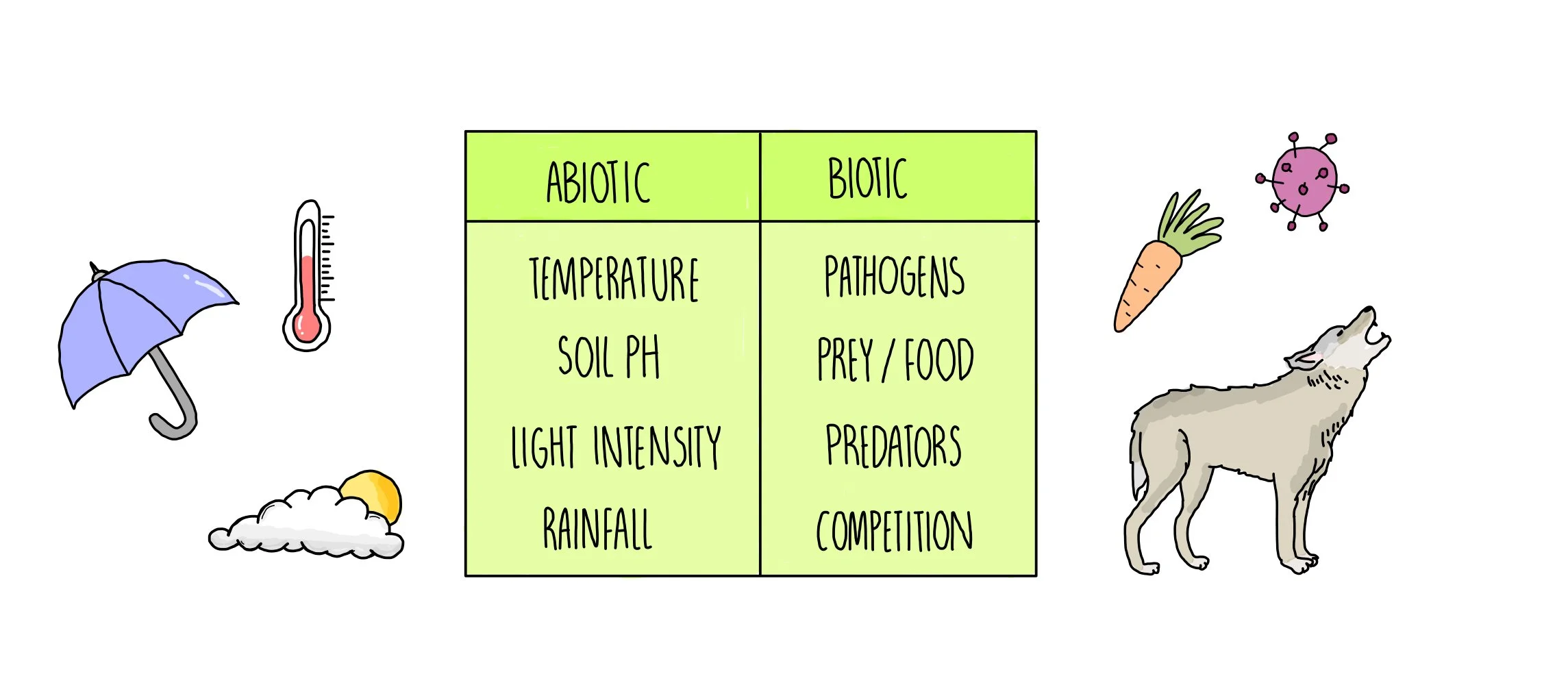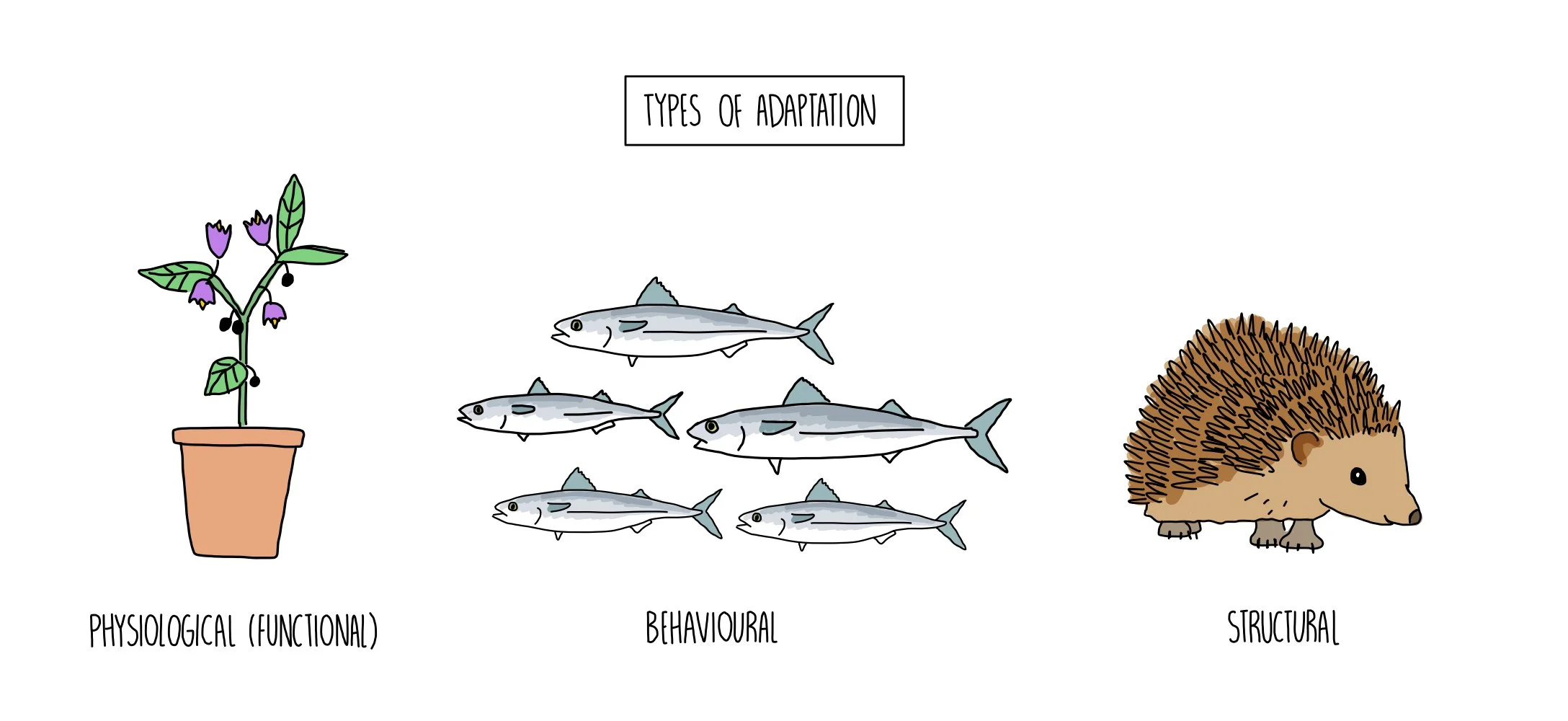Adaptation and Competition
All organisms are adapted to their environment — think of a giraffe’s long neck or a human’s huge skull. Organisms often compete for resources like food and mates. Those that are better adapted will outcompete their rivals and are more likely to survive.
Communities
You need to be able to understand and define the following keywords which can be used to describe different groups within the environment:
Woodland is an example of a habitat.
Population — all the members of a single species which live in the same area
Habitat — the area in which an organism lives
Community —all the populations of different species which interact together in the same habitat
Ecosystem — a community of organisms and the habitat in which it lives (i.e. both the biotic and abiotic factors)
For example, if you live in England then you are a member of the UK population (members of the Homo Sapien species living in the same area) and your habitat is the specific area in which you live (such as the city of London). The community would be the interaction of humans with their pets and the animals and plants which we buy from the supermarket to consume. The ecosystem in which we live is all of those things, together with non-living factors such as the weather.
Within a community, each species depends on other species for food, shelter, pollination and seed dispersal. If even one species is removed from the community, it can affect all of the other species in the community. For example, squirrels rely on acorns for food and oak trees for shelter. If oak trees were wiped out in a habitat (e.g. due to disease or because they have been cut down), the squirrels would struggle to survive and their numbers would decline. In turn, this would make it difficult for species such as foxes, who rely on squirrels for food, to also survive. The dependence between different species in a community is called interdependence.
To survive and reproduce, organisms require a supply of materials (e.g. food, oxygen, water) from their surroundings and from the other organisms living there. Because there aren’t enough materials to supply all of the organisms living in a habitat, there is competition between organisms. Plants often compete with each other for light, space, water and mineral ions from the soil. Animals often compete with each other for food, mates and territory.
Abiotic Factors
An ecosystem is a community of organisms which interact with other living organisms (biotic factors) as well as the non-living components (abiotic factors) within their environment.
The abiotic, or non-living, factors which organisms within a community would interact with include:
Light intensity is an abiotic factor in ecosystems.
Temperature
Soil/water pH
Minerals in soil
Light intensity
Moisture levels
Wind intensity and direction
Carbon dioxide levels
Concentration of dissolved oxygen in streams/rivers/oceans
Biotic Factors
The biotic, or living, factors which organisms within a community would interact with include:
Food / prey
Predators
Competing with other organisms for resources
Pathogens
Adaptations
Living organisms display features (adaptations) which make them suited to living in a particular habitat and more likely to survive. These adaptations can be behavioural, physiological or structural.
Behavioural adaptations are the way that an organism acts which increase its chances of survival. For example, fish often swim in groups called schools for protection and birds migrate south during the winter to find food.
Physiological/functional adaptations are processes which occur within the body of an organism which increase its chances of survival. For example, sloths have a slow metabolism which means they can survive on food which contains a low number of calories and plants such as the deadly nightshade produce a poison which is a defence against being eaten by animals.
Structural adaptations are physical features of an organism which increase its chances of survival. For example, polar bears are camouflaged against the snow and cacti have spines to prevent being eaten by animals.
Extremophiles are organisms which live in an extreme environment, such as high temperature, high pressure or high salt concentrations. For example, some bacteria live deep in the ocean on hydrothermal vents, where temperatures and pressures are very high.



